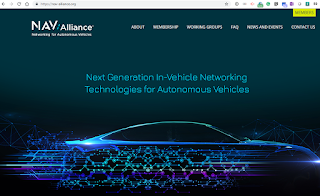BT, which currently operates street furniture concessions across nine local authorities (Glasgow, Cardiff, Brighton, Plymouth, Carlisle, Newcastle/Gateshead, Nottingham, Gloucester and Leicester), is proposing to end its exclusive agreements to encourage other local authorities and the wider industry to adopt an alternative ‘open access’ model.
BT says the current concession model favoured by many local authorities, which grant a single mobile operator or infrastructure provider exclusive access to council-owned street furniture such as lamp posts and CCTV columns, discourages investments from other operators and will stymie the rollout of 5G small cells.
 Paul Ceely, Director of Network Strategy, BT Group, said: “While the concessions model made sense in the early 2010’s when it first came into common use, the market and regulatory landscape have changed and it’s become clear that exclusivity agreements act as a barrier to further 4G and 5G investments. Government initiatives such as the DCMS Barrier Busting taskforce are showing the way, but we believe that industry needs to act. We are leading the way by handing back exclusivity in nine key areas.
Paul Ceely, Director of Network Strategy, BT Group, said: “While the concessions model made sense in the early 2010’s when it first came into common use, the market and regulatory landscape have changed and it’s become clear that exclusivity agreements act as a barrier to further 4G and 5G investments. Government initiatives such as the DCMS Barrier Busting taskforce are showing the way, but we believe that industry needs to act. We are leading the way by handing back exclusivity in nine key areas.
“The UK needs an alternative approach which sees industry and local authorities working together to share these street sites in an open and collaborative way. This will create the right environment for long-term investment and innovation in future mobile networks. We believe Open Access will be critical in ensuring the UK has the best mobile infrastructure in place to maintain its position as one of the world’s leading digital economies.”
BT’s mobile arm, EE, has already revealed the first 16 cities to benefit from the launch of 5G services later this year. London, Cardiff, Belfast, Edinburgh, Birmingham and Manchester will be the first flagship cities for 5G deployment this year, with parts of Glasgow, Newcastle, Liverpool, Leeds, Hull, Sheffield, Nottingham, Leicester, Coventry and Bristol also set to benefit.
https://www.btplc.com/News/#/pressreleases/bt-calls-for-open-equivalent-access-to-street-furniture-to-boost-4g-and-5g-coverage-2850529
BT says the current concession model favoured by many local authorities, which grant a single mobile operator or infrastructure provider exclusive access to council-owned street furniture such as lamp posts and CCTV columns, discourages investments from other operators and will stymie the rollout of 5G small cells.
 Paul Ceely, Director of Network Strategy, BT Group, said: “While the concessions model made sense in the early 2010’s when it first came into common use, the market and regulatory landscape have changed and it’s become clear that exclusivity agreements act as a barrier to further 4G and 5G investments. Government initiatives such as the DCMS Barrier Busting taskforce are showing the way, but we believe that industry needs to act. We are leading the way by handing back exclusivity in nine key areas.
Paul Ceely, Director of Network Strategy, BT Group, said: “While the concessions model made sense in the early 2010’s when it first came into common use, the market and regulatory landscape have changed and it’s become clear that exclusivity agreements act as a barrier to further 4G and 5G investments. Government initiatives such as the DCMS Barrier Busting taskforce are showing the way, but we believe that industry needs to act. We are leading the way by handing back exclusivity in nine key areas.“The UK needs an alternative approach which sees industry and local authorities working together to share these street sites in an open and collaborative way. This will create the right environment for long-term investment and innovation in future mobile networks. We believe Open Access will be critical in ensuring the UK has the best mobile infrastructure in place to maintain its position as one of the world’s leading digital economies.”
BT’s mobile arm, EE, has already revealed the first 16 cities to benefit from the launch of 5G services later this year. London, Cardiff, Belfast, Edinburgh, Birmingham and Manchester will be the first flagship cities for 5G deployment this year, with parts of Glasgow, Newcastle, Liverpool, Leeds, Hull, Sheffield, Nottingham, Leicester, Coventry and Bristol also set to benefit.
https://www.btplc.com/News/#/pressreleases/bt-calls-for-open-equivalent-access-to-street-furniture-to-boost-4g-and-5g-coverage-2850529













